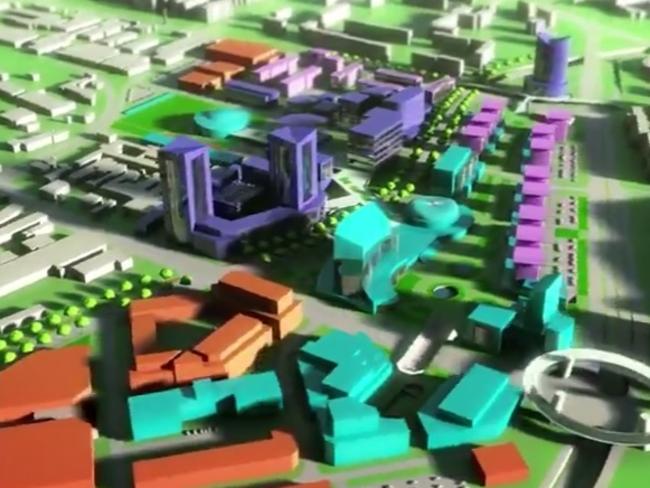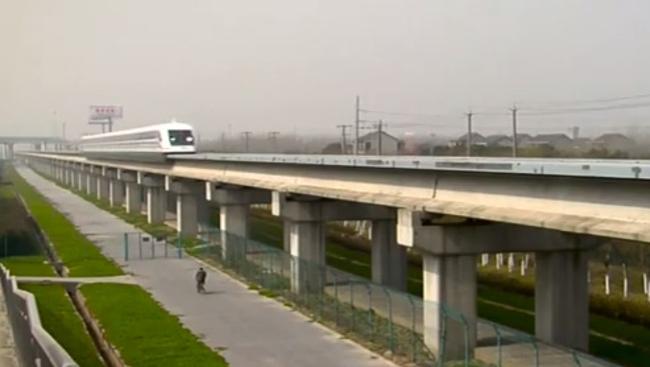Australia could soon get its own ‘dormitory towns’ thanks to fast rail
AUSTRALIA may soon get as many as eight new towns as part of a $200 billion high-speed rail plan. But would you live there?
AUSTRALIA may soon get its own “dormitory towns” with the unveiling of an ambitious $200 billion plan for a high speed rail network between Melbourne and Sydney.
The private company Consolidated Land and Rail Australia (CLARA) Pty Ltd says it can deliver the rail project by building eight new cities and using value capture to pay for it.
The rail line won’t cost taxpayers anything and the project will also deliver cities where homes are affordable and where people can still travel to a capital city in less time than a morning commute.
In a promotional video released today, the new cities are being pitched as places where “data is open, energy is renewable, water is valued, homes are affordable and people can live within 10 minutes of all they need”.
Even more alluring is the promise for “cities built to unlock all human potential”, where people can travel to a capital city in less time than a morning commute.
It almost sounds too good to be true and as Dr Michael de Percy of the University of Canberra has noted, “the devil is in the detail”.

While details are still scarce, Dr de Percy has welcomed the new plan, describing it as a very modern approach towards delivering infrastructure.
“I believe it could be a way to take advantage of (Australia’s) natural advantages such as using our space to relieve population growth and things like gridlock,” he said.
The project uses value capture to help fund the new fast rail network, which can involve taxes or levies being placed on land or houses that benefit from the project. Dr de Percy said this means those who actually benefit from an increase in land values that building public transport generally delivers, actually pay for it.
In this case, CLARA has already secured land deals for regional hubs that will be set up close to existing towns. If all goes to plan, construction could start within five years.
Because the plan involves building new cities rather than using existing cities as hubs, Dr de Percy said this would overcome one of the major roadblocks to delivering new infrastructure.
“When it comes to infrastructure there are always winners and losers,” he said.
Often those who lose out are existing businesses or homes impacted by the rail link either during construction or once it’s finished.
Compensating these people can be extremely complicated but building a new city means there won’t be as many people negatively impacted by the development.
It also makes the project’s potential clear from the start.
“Right from the beginning the value capture is clear to investors, rather than the project interfering with existing conditions and having to compensate people if they lose out.”
That does not mean there aren’t other problems the developers would have to wrestle with.

The plan may leave residents in existing towns upset at missing out.
“They may wonder ‘why aren’t we getting it?’, ‘why is it going to nobody?’.”
Making the cities attractive to residents would be another hurdle.
“Certainly you would have to make it attractive to people to want to live there in the first place,” Dr de Percy said.
“People want to own their own home but it’s increasingly difficult to do so in cities so one would hope a new regional centre would allow traditional modes of living that just don’t exist, and you would hope it would be more affordable too.”
Commuter towns, also called “dormitory villages”, “bedroom communities” or “bed towns” already exist in the US, UK and Japan.
But one risk is they become soulless suburban hubs that can seem empty.
Basildon, located just half an hour from London, was originally envisioned as a futuristic city. But its concrete buildings have since become dated, leaving some to comment on its lack of character.
“Some of the best intentions in planning have proven to be plain wrong,” Dr de Percy said.
“Most people know of places that are not functioning well because of poor planning,” he said.
One of the more infamous examples in Australia was the Waterloo housing estate in Sydney that became known as the “suicide towers”.
“I think the planning would be very important in terms of enabling growth without just repeating urban sprawl we’ve experienced,” Dr de Percy said of the new project.
“Starting from scratch gives you the best opportunity of getting it right.”
Dr de Percy said delivering a fast rail line and eight new cities would require many different experts.
“We need strong leadership to make such a plan work, and commitment of course.”



